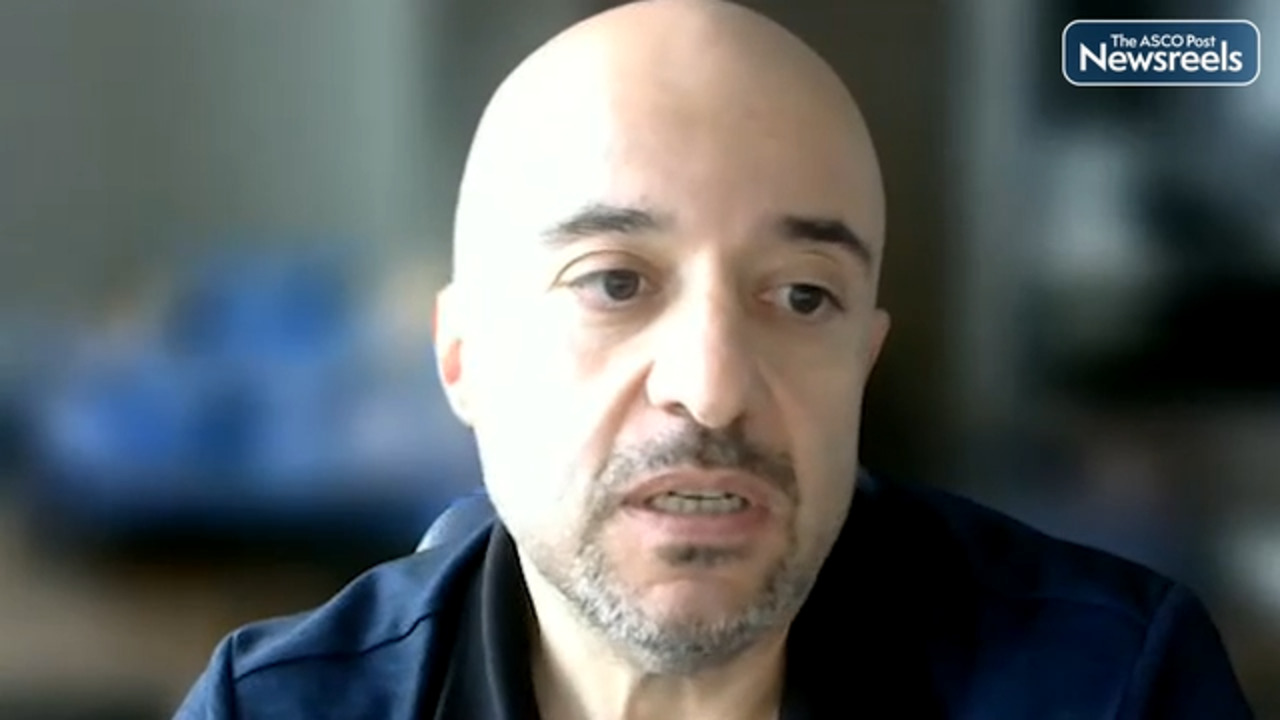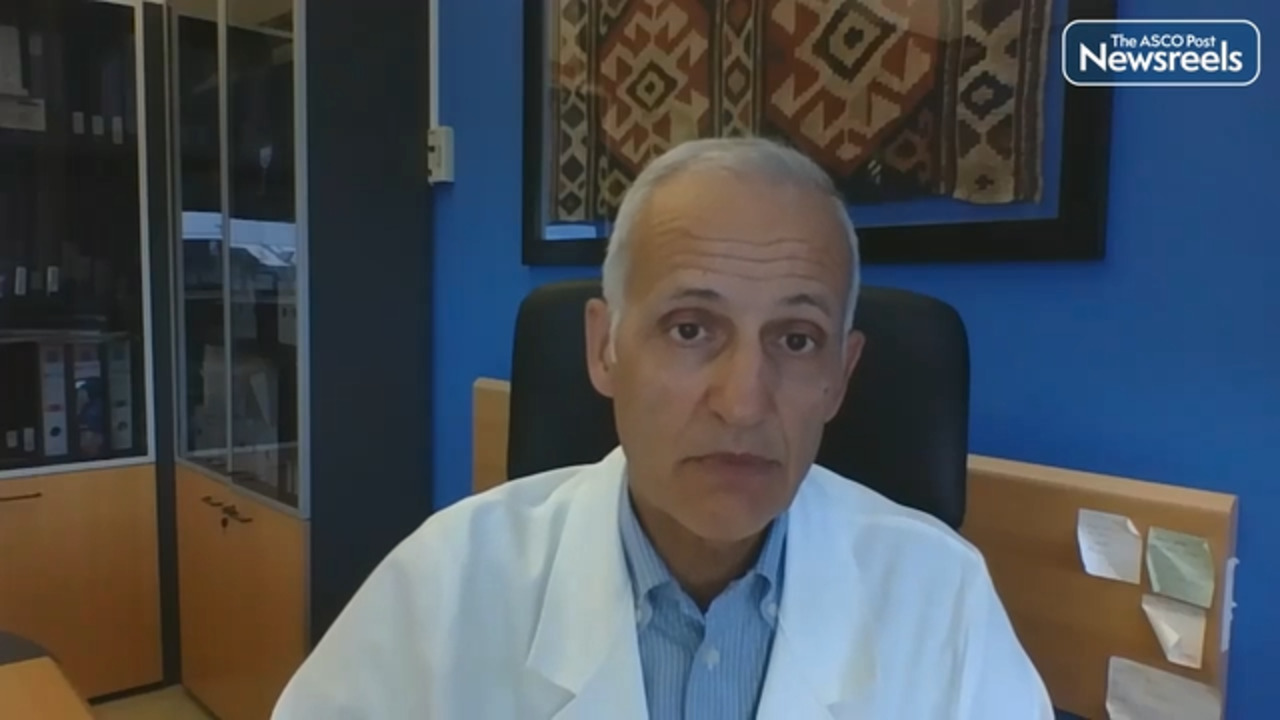Online AI Tool Offers Rapid, Accurate Diagnosis for Endocrine Cancers

Researchers have developed a novel AI-powered online platform for diagnosing endocrine cancers with speed and accuracy. The AI models achieved diagnostic accuracy of 99% or more in recognizing multiple endocrine tumors. Reports of the development and validation of the models were presented at ENDO 2025, the annual meeting of the Endocrine Society (Abstract OR24-08).
“By democratizing access to advanced diagnostics, this AI innovation marks a paradigm shift in cancer care, offering hope for earlier detection, more precise treatment, and better survival for patients facing endocrine malignancies,” stated chief project mentor, Elangovan Krishnan, MBBS, PGDHM, MTech, MS, PhD, of AIM Doctor in Houston, Texas. “This AI-powered application can deliver fast, reliable, and affordable endocrine cancer diagnostics to anyone, anywhere, thereby helping to close gaps in cancer care and advance health equity worldwide.”
Study Methods and Rationale
The researchers sought out to develop an AI model for endocrine tumor evaluation in order to promote equitable cancer care. They hope that the resulting application can democratize specialized cancer diagnostics, making it more accessible for improved patient outcomes globally, even in resource-limited settings.
They tested two advanced deep learning architectures—EfficientNets and ResNets—on multimodal and anonymized datasets of computed tomography, magnetic resonance imaging, ultrasonography, cytopathology, and histopathology information from all forms of endocrine tumors to allow for maximum generalizability. Also, they curated images of endocrine cancers representing diverse global populations of patients with endocrine tumors to train and validate the models on these images for detection and staging purposes.
Then the model was developed into an online platform so that users could access and test the models with their local data. Health-care professionals across the world used and validated the model with their independent assessments to prove its real-world applicability.
Key Study Findings
The models achieved diagnostic accuracy above 99% (AUROC) with robust generalizability across multiple endocrine tumors.
As an online platform, the model demonstrated rapid processing speeds of less than a second per image while continuing to achieve diagnostic accuracy.
"Our findings illustrate a paradigm shift in biomedical AI, where minimal computational resources yield maximal diagnostic performance," the study authors wrote in their abstract.
Disclosure: For full disclosures of the study authors, visit endocrine.org.
MRD-Guided Therapy With Ibrutinib/Venetoclax or Ibrutinib Alone in Chronic Lymphocytic Leukemia

In an update from the UK phase III FLAIR trial reported in The New England Journal of Medicine, Munir et al compared the survival benefit of measurable residual disease (MRD)–guided therapy with ibrutinib/venetoclax vs ibrutinib alone in chronic lymphocytic leukemia.
An interim analysis showed improved progression-free survival with MRD-guided ibrutinib/venetoclax vs fludarabine/cyclophosphamide/rituximab (FCR). The current report includes findings on MRD-negative status with ibrutinib alone and updated progression-free survival comparisons among treatment groups.
Study Details
In the open-label multicenter trial, 786 patients were randomly assigned 1:1:1 between July 2017 and March 2021 to receive ibrutinib/venetoclax (n = 260), ibrutinib alone (n = 263), or FCR (n = 263). FCR was given every 28 days for 6 cycles. Ibrutinib/venetoclax and ibrutinib alone were given for up to 6 years unless MRD-based stopping criteria were met. In the current analyses, the primary outcome measures were undetectable MRD in bone marrow within 2 years in the ibrutinib/venetoclax group vs the ibrutinib-alone group and updated progression-free survival in the ibrutinib/venetoclax group vs the FCR group.
Key Findings
Undetectable MRD at 2 years was found in 172 patients (66.2%) in the ibrutinib/venetoclax group vs 0 patients (0%) in the ibrutinib-alone group (P < .001); 127 patients (48.3%) in the FCR group had undetectable MRD at 2 years.
At a median follow-up of 62.2 months, disease progression or death had occurred in 18 patients (6.9%) in the ibrutinib/venetoclax group vs 59 (22.4%) in the ibrutinib-alone group (hazard ratio [HR] = 0.29, 95% confidence interval [CI] = 0.17–0.49, P < .001) and 112 (42.6%) in the FCR group (HR = 0.13, 95% CI = 0.08–0.21, P < .001). Progression-free survival at 5 years was 93.9%, 79.0%, and 58.1%, respectively.
Death occurred in 11 patients (4.2%) in the ibrutinib/venetoclax group vs 26 (9.9%) in the ibrutinib-alone group (HR = 0.41, 95% CI = 0.20–0.83) and 39 (14.8%) in the FCR group (HR = 0.26, 95% CI = 0.13–0.50). Sudden death occurred in three, eight, and four patients, respectively.
The investigators concluded: “With extended follow-up and increased enrollment, our trial showed that undetectable MRD and extended progression-free survival were more common with [ibrutinib/venetoclax] than with ibrutinib alone or FCR. The results for overall survival were also consistent with a benefit of [ibrutinib/venetoclax].”
Talha Munir, PhD, of St. James’s University Hospital, Leeds, is the corresponding author for the New England Journal of Medicine article.
Disclosure: The study was funded by Cancer Research UK and others. For full disclosures of all study authors, visit the nejm.org.
New Guidelines on Comprehensive Biomarker Testing of Bronchoscopic Biopsies

Linear endobronchial guided sampling of accessible mediastinal lesions is well established as a first-choice modality for lung cancer mediastinal staging. Parenchymal lung lesions, however, are routinely accessed by either a percutaneous (CT-guided) or a bronchoscopic approach. There have been few direct comparisons between the percutaneous approach and bronchoscopy, endobronchial ultrasound (EBUS), or mediastinoscopy regarding diagnostic accuracy, and it remains unknown which sampling technique is the safest and offers the most adequate material for comprehensive biomarker testing.
Newly released guidelines published in the Journal of Thoracic Oncology provide evidence regarding the safety and sampling adequacy for comprehensive biomarker testing of bronchoscopy-guided lung parenchymal biopsies as compared to percutaneous biopsies, and EBUS-guided lymph node sampling as compared to mediastinoscopy. According to the guidelines, which are the result of a multidisciplinary panel convened by the American Association of Bronchology and Interventional Pulmonology (AABIP) and the Early Detection & Screening Committee of the International Association for the Study of Lung Cancer (IASLC), the tissue provided by guided bronchoscopy sampling is comparable to that provided by percutaneous (CT-guided) biopsy and delivers a superior safety profile, particularly when contemporary navigational technologies are used.
Key Findings
Across the analyzed studies, the panel found that bronchoscopy-guided parenchymal biopsies yielded molecular-testing specimens equivalent in quality and quantity to those obtained via percutaneous biopsy, and guided bronchoscopy consistently produced fewer serious complications—such as pneumothorax and significant bleeding—than percutaneous approaches. For lymph-node staging, EBUS continues to rival mediastinoscopy in diagnostic accuracy while offering lower morbidity for mediastinal assessment.
“These recommendations are immediately actionable for clinicians deciding how best to obtain tissue for biomarker analysis in suspected or confirmed lung cancer,” said Abhinav Agrawal, MD, Director of Interventional Pulmonology and Associate Professor of Medicine & Cardiovascular/Thoracic Surgery at the Donald and Barbara Zucker School of Medicine at Hofstra/Northwell. “They should also inform the design of future clinical trials by highlighting both sample adequacy and the safety advantages of minimally invasive bronchoscopic techniques.”
Disclosure: For full disclosures of the study authors, visit jto.org.
Metformin in Metastatic Prostate Cancer

In a phase III trial (part of the STAMPEDE platform) reported in The Lancet Oncology, Gillessen et al investigated the survival outcomes of adding metformin to standard of care (SOC) in nondiabetic patients with metastatic hormone-sensitive prostate cancer starting androgen-deprivation therapy (ADT).
Study Details
In the open-label trial, 1,874 patients from sites in the United Kingdom and Switzerland were randomly assigned between September 2016 and March 2023 to receive SOC (n = 938) or metformin at 850 mg twice daily plus SOC (n = 936). Standard of care consisted of ADT with or without radiotherapy and with or without docetaxel or an androgen receptor pathway inhibitor (ARPI; docetaxel vs abiraterone, enzalutamide, or apalutamide). The primary endpoint was overall survival.
Key Findings
Median time to most recent patient follow-up was 60 months (interquartile range [IQR] = 49–72 months). Median overall survival was 67.4 months (IQR = 32.5 months to not reached) in the metformin-SOC group vs 61.8 months (IQR = 29.7 months to not reached) in the SOC group (hazard ratio [HR] = 0.91, 95% confidence interval [CI] = 0.80–1.03, P = .15).
Grade ≥ 3 adverse events occurred in 57% of the metformin-SOC group vs 52% of the SOC group, with grade ≥ 3 gastrointestinal adverse events in 9% vs 7%; no differences in grade ≥ 3 events in other body systems were observed.
Weight gain was significantly lower in the metformin-SOC group at 24, 48, and 104 weeks (all P < .0001). Among 583 patients with body weight data available at baseline and at 104 weeks, those in the metformin-SOC group gained a mean of 2.00 kg (95% CI = 1.31–2.69 kg) vs 4.40 kg (95% CI = 3.57–5.24 kg) in the SOC group (mean difference = –2.48 kg, 95% CI = –3.55 to –1.41 kg).
The investigators concluded: “We did not find significant evidence of an overall survival benefit of adding metformin to SOC in the overall population of patients with metastatic hormone-sensitive prostate cancer. The side-effect profile of metformin was as expected and consisted mainly of diarrhea. Adverse metabolic side effects of ADT were significantly reduced in the metformin group compared with the standard of care group.”
Silke Gillessen, MD, of the Institute of Oncology of Southern Switzerland, Ente Ospedaliero Cantonale, Bellinzona, is the corresponding author for The Lancet Oncology article.
Disclosure: The study was funded by Cancer Research UK, Prostate Cancer UK, and UK Research and Innovation Medical Research Council. For full disclosures of all study authors, visit The Lancet Oncology.
Teclistamab for High-Risk, Heavily Pretreated Multiple Myeloma: Real-World Data

Teclistamab-cqyv is the first bispecific T-cell engager antibody that targets both B-cell maturation antigen (BCMA) proteins on myeloma cells and CD3 proteins on T cells. It was approved by the U.S. Food and Drug Administration in 2022 for treatment of patients with relapsed or refractory multiple myeloma based on findings from the MajesTEC-1 trial.
A recent retrospective study evaluated the real-world safety and efficacy of teclistamab, including its activity in patients who were not represented in the phase I/II MajesTEC-1 trial. Researchers reported that the agent produced clinically meaningful responses in heavily pretreated patients with relapsed or refractory multiple myeloma, including those with prior BCMA therapy. The findings also showed a complex interplay among disease burden, T-cell fitness, inflammation, recent exposure to prior BCMA-directed therapies, and cytogenetic risk factors that influence patient outcomes. The study by Razzo et al was published in Blood Cancer Discovery.
Study Methodology
The researchers conducted a multicenter retrospective study from 15 academic medical centers in the United States Multiple Myeloma Immunotherapy Consortium. A total of 509 patients with relapsed or refractory multiple myeloma who received teclistamab between August 2022 and January 2024 were included in this retrospective analysis, half of whom had received at least six prior treatments. A total of 89% of these patients (n = 453) were ineligible for participation in the MajesTEC-1 trial. Overall, the patients in this study represented a higher-risk population, with more frail individuals enrolled and a greater prevalence of multidrug-refractory disease and cytogenetic abnormalities. Median age of the participants was 68 years, and 23% were aged 75 or older. A total of 19% of the patients were Black. High-risk features included extramedullary plasmacytomas in 202 patients (45%), ≥ 60% bone marrow plasma cell burden in 40 patients, high-risk cytogenetic features in 275 patients (54%), and at least two high-risk cytogenetic features in 108 patients (21%).
Responses to the therapy were assessed based on the International Myeloma Working Group criteria by each individual institution.
Key Results
Teclistamab reduced the disease burden by at least half in 53% (n = 270) of the 506 evaluable patients, with 45% (n = 228) experiencing at least a 90% reduction in disease burden. At a median potential follow-up of 10.1 months, half of the patients remained progression-free for at least 5.8 months, and an estimated 61% were alive at 1 year. Despite the high prevalence of patients with high-risk features, there appeared to be no increase in adverse event frequency compared with their prevalence in MajesTEC-1 and other real-world analyses of the bispecific antibody’s use. In addition, the 56 patients who would have been eligible for MajesTEC-1 had similar overall response rates as the trial participants, 61% and 63%, respectively.
Furthermore, regarding MajesTEC-1–ineligible patients, teclistamab also was of benefit to many patients previously treated with BCMA-targeting chimeric antigen receptor (CAR) T cells or the antibody-drug conjugate belantamab mafodotin-blmf. Of these patients, 40% experienced a very good partial response, including 43% of the 58 patients previously treated with belantamab mafodotin and 38% of the 104 patients previously treated with CAR T-cell therapy.
Further analyses found that patients who underwent prior BCMA-targeting therapy within 9 months of starting teclistamab experienced lower rates of very good partial response and shorter periods of progression-free survival. However, the researchers found that this therapeutic resistance occurred more often in the patients recently treated with CAR T-cell therapies than in those recently treated with belantamab mafodotin, who responded at a rate comparable to that in BCMA therapy–naive patients.
“Our findings significantly enhance the understanding of the safety and efficacy of teclistamab in real-world settings. We confirm that teclistamab is a safe and highly effective treatment option for patients with relapsed/refractory multiple myeloma. Furthermore, our results highlight the complex interplay between disease burden, T-cell fitness, inflammation, recent exposure to prior BCMA-directed therapies, and cytogenetic risk factors in influencing patient outcomes, providing valuable insights for optimizing the use of teclistamab in clinical practice,” concluded the study authors.
Disclosure: For full disclosures of the study authors, visit aacrjournals.org/bloodcancerdiscov.
Sponsored Content

Tester sponsor 1
Tester Title 1
SPONSORED BY BREAST CANCER INDEX® BIOTHERANOSTICS, INC. A HOLOGIC COMPANY
Extended Endocrine Therapy for Early-Stage Hormone Receptor–Positive Breast Cancer: Tools for Decision-MakingMore Top Stories
AI Tops Density in Predicting Breast Cancer Risk
An image-only artificial intelligence (AI) model for predicting the 5-year risk of breast cancer provided stronger and more precise risk stratification than breast density assessment, according to a news statement issued about a study presented at the annual meeting of the Radiological Society of...
AI-Based Imaging Model Predicts Extranodal Extension Burden and Improves Risk Stratification in Oropharyngeal Cancer
Prediction of the number of lymph nodes with extranodal extension in patients with oropharyngeal carcinoma through a deep learning imaging platform for autosegmentation may help to guide pretreatment patient risk stratification and treatment decision-making, according to the results of a multisite, ...
Neoadjuvant Dual ICI Blockade vs Perioperative FLOT in dMMR/MSI-H Gastroesophageal Adenocarcinoma
In an individual-patient pooled analysis reported in the Journal of Clinical Oncology, Raimondi et al found that neoadjuvant treatment with dual CTLA-4/PD-(L)1 immune checkpoint inhibitors (ICIs) was associated with higher pathologic response rates vs perioperative FLOT (fluorouracil, leucovorin,...
Ironically, Smoking May Have Saved My Life
I was diagnosed with stage IV non-small cell lung (NSCLC) adenocarcinoma on August 1, 2013—World Lung Cancer Day. If it hadn’t been for an article that caught my eye the year before about the recommendation from the United States Preventive Services Task Force that all men aged 65 to 75 who have...
High Neighborhood Fast Food Expenditure and Early-Onset Colorectal Cancer
Studies show that while the overall rates of colorectal cancer are decreasing, for individuals younger than age 50, the incidence has risen by an alarming 50% since the mid-1990s. While the exact causes are unknown, poor diet and alcohol consumption are believed to be contributing factors. A study...
Hear, Hear to ‘Advancing Geriatric Oncology: Where We Have Been and Where We Are Going’
We read with interest the commentary by Stuart Lichtman, MD, FASCO,on “Advancing Geriatric Oncology: Where We Have Been and Where We Are Going,“ in the October 25, 2025 issue of The ASCO Post.1 Dr. Lichtman outlines the challenges in delivering cancer care to the elderly population. Among these...
Survey Finds Most People Trust AI Less Than Physicians, but See Its Potential for Cancer Diagnosis
The introduction of large language models (LLMs) such as ChatGPT to the general public has led to the fastest adoption of any technology in history, with individuals frequently reporting using the technology when experiencing medical issues, according to a recent study. Two national surveys...









